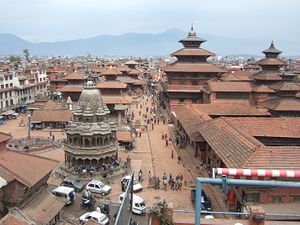Nepal has been without an effective constitution or political system since the abolition of its monarchy in 2008, despite an interim constitution. As The Diplomat previously reported, Nepal has tried for years to successfully draft a permanent constitution. Violent protests broke out a few days ago in anticipation of Thursday’s deadline for the Constitutional Assembly to finish their work. To nobody’s surprise, Nepal failed to produce a constitution by then (yet again).
Despite constant negotiations, attempts at compromise, and even advice from Indian Prime Minister Narendra Modi, Nepal’s politicians have failed to come up with a constitution for several years. There is nothing to indicate that this is likely to change any time soon. The problem lies in the fact that there are two irreconcilable positions among Nepalese politicians. The first position is taken by the majority alliance of the Nepali Congress Party and the Communist Party of Nepal (Unified Marxist Leninist), which together hold more than two-thirds of the seats in the assembly. This party wants Nepal, a multiethnic country, to be a unitary state. This would, in effect, concentrate power in upper-caste Nepali speakers, who form only 44.6 percent of the Nepali population. The alternative proposal, mooted by the Maoists and regional parties, would see Nepal become a federal state with ethnic-based states. Additionally, they want the constitution to be formed on the basis of consensus rather than majority. India seems to lean toward this position.
Nepal consists of roughly three geographic and ethnic belts. The terai or plains form the southern belt and border India; half of Nepal’s population lives there and is virtually indistinguishable from the Hindi, Maithili, and Bhojpuri speaking population of the Indian states of Uttar Pradesh and Bihar. The central belt of Nepal is the hilly belt (pahad), which forms the bulk of Nepal and is the dominant political region of that country. This region is inhabited by ethnic Gorkha or Nepali speakers (Nepali is related to Hindi). The northernmost belt, the mountainous belt borders the Tibet region of China and consists of ethnicities that have religious and linguistic affinities with Tibetans.
Traditionally, Nepalese politics have been dominated by Nepali speakers from central Nepal, where the erstwhile monarchy originated. In addition to promoting a unitary government, the traditional Nepali establishment has sought to encourage the preservation of Nepal’s various ethnicities and languages at the local level in multiethnic provinces, rather than allow the consolidation of these groups into larger groups with coherent identities. For example, in the terai, the government has previously encouraged the use of various local languages and dialects like Bhojpuri, Awadhi, and Tharu in addition to Nepali. This is contrary to the goals of terai leaders who wish to consolidate the identity of their region through the use of a lingua franca, Hindi (in India, the above languages are usually considered dialects of Hindi).
In short, Nepal’s ethnic composition and politics do not provide it with an appealing choice, as both a unitary and federal structure could exacerbate tensions between its various ethnic groups and enhance its dysfunction. It is unlikely that Nepal will come up with a stable solution anytime soon, as the disagreements over its political structure are hard to reconcile. Any attempt to implement a solution by force or coercion would likely lead to more instability. The possibility of Nepal’s disintegration grows stronger by each passing day. Contrary to the claim of Nepali nationalists that an independent Nepal existed “forever,” Nepal is a relatively young country founded solely on the basis of the ad hoc conquests of one man, Prithvi Narayan Shah. King Prithvi Narayan Shah was the ruler of Gorkha in today’s central Nepal. The region, like many parts of South Asia, was divided into many states and it would be anachronistic to give it any particular unity. After capturing Kathmandu in the Newar or Nepal Valley in 1768, Prithvi Narayan Shah made it the capital of his growing kingdom, to which the valley gave its name. Nepal avoided absorption into British India mainly because of its usefulness as a buffer state between India and the Qing Dynasty garrison in Tibet.
Given these facts and the inability of the Nepali government to construct a stable system of governance or internal organization, especially after the overthrow of the monarchy that held the state together, the future existence of Nepal is to be seriously questioned. The continued failure of its politicians to write a constitution will further disillusion its people and cause them to question their future and the future of their country, especially as they see their neighbors India and China prosper.
































